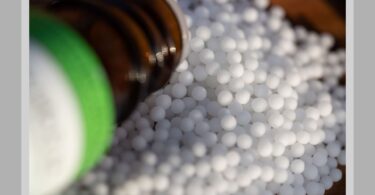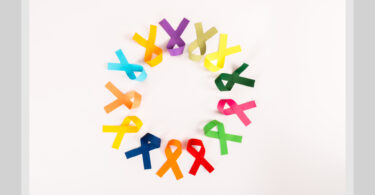In my last lecture, we had discussed the possible mode of action of homeopathic remedies. I had ended that lecture with the following question:
When we ‘prove’ a medicine, the medicine does not seem to work unconditionally. It will prove on some and not on others, depending upon the sensitivity and the susceptibility of the person. But when a person is sick and in need of a particular medicine, it nearly always works – seemingly unconditionally. Have you ever wondered why?
Now it’s time to answer this question and the answer has been provided by Hahnemann himself. He not only tells us the answer to this question, he also tells us why diseases affect us more conditionally than similar homeopathic remedies. Let’s explore what he says. In the aphorism 30, he first raises this issue:
§ 30
The human body appears to admit of being much more powerfully affected in its health by medicines (partly because we have the regulation of the dose in our own power) than by natural morbid stimuli – for natural diseases are cured and overcome by suitable medicines.1
Here he is making three statements:
- Human body is more powerfully affected by medicines than disease causing stimuli.
- This is apparent because when suitable remedies are given, they are able to remove the diseased state.
- One of the reasons for this greater effect is our ability to control the power/dose of the medicines.
The first point comes from our observation that in nature every disease is unable to affect every person, even when living in close proximity. Also, even during drug provings, not every person is able to produce symptoms in high attenuations. But when we prove a remedy in low attenuations or give a remedy to a sick person, the possibility of getting an effect is much higher.
There are two reasons for this:
- In health, people are not susceptible to every disease causing stimuli, hence disease usually does not affect us unconditionally.
- The doses of medicine can be regulated to ensure that the body does produce an effect in response to the stimulus.
Dr. Hahnemann explains this second point in the footnote to aphorism 30:
1 The short duration of the action of the artificial morbific forces, which we term medicines, makes it possible that, although they are stronger than the natural diseases, they can yet be much more easily overcome by the vital force than can the weaker natural diseases, which solely in consequence of the longer, generally lifelong, duration of their action (psora, syphilis, sycosis), can never be vanquished and extinguished by it alone, until the physician affects the vital force in a stronger manner by an agent that produces a disease very similar, but stronger to wit a homoeopathic medicine. The cures of diseases of many years’ duration (§ 46), by the occurrence of smallpox and measles (both of which run a course of only a few weeks), are processes of a similar character.
Let us again explain this footnote point-by-point. He says:
- The natural diseased state is created by miasmatic influences – Psora, Syphilis, Sycosis. These states are usually life-long.
- These natural disease states cannot be overcome by the Vital Force by itself, because in diseased state, the Vital Force is debilitated.
- The artificial disease state is created by medicines. These states are short-lived.
- The artificial diseased states though stronger than the natural disease states, are overcome by the vital force because of their short duration.
- The natural disease state is removed when a physician excites the vital force with a similar artificial disease state.
- He stresses that the similarity is essential, as is evident in natural cures. He cites examples of smallpox and measles curing chronic affections, which we will discuss in later aphorisms.
All the points are clear and do not need further explanation. There is one thing that I would like to make clear about point number four. The artificial disease state is not ‘overcome’ by the vital force. It is actually a short-lived state and needs repeated dosing to maintain it. Once the natural disease state is overcome by the vital force and there are no further stimuli coming in the form of repeated doses, the artificial state clears on its own.
After explaining the effect of medicines, he then moves on to discuss the role of susceptibility in disease. He states in aphorism 31:
§ 31
The inimical forces, partly psychical, partly physical, to which our terrestrial existence is exposed, which are termed morbific noxious agents, do not possess the power of morbidly deranging the health of man unconditionally1; but we are made ill by them only when our organism is sufficiently disposed and susceptible to attack of the morbific cause that may be present, and to be altered in its health, deranged and made to undergo abnormal sensations and functions – hence they do not produce disease in every one nor at all times.
1 When I call a disease a derangement of man’s state of health, I am far from wishing thereby to give a hyperphysical explanation of the internal nature of disease generally, or of any case of disease in particular. It is only intended by this expression to intimate, what it can be proved diseases are not and cannot be, that they are not mechanical or chemical alterations of material substance of the body, and not dependant on a material morbific substance, but that they are merely spirit-like (conceptual) dynamic derangements of the life.
Here Dr. Hahnemann is very categorical that diseases are not mere pathological changes in our body. They are essentially ‘dynamic’ derangements of our vital force. In my earlier lectures I have explained how this can be understood as decreasing energy in a biological open thermodynamic system.
He says that diseases do not affect human beings (or any organism) unconditionally. The organism must be predisposed to and in a susceptible state for the disease to affect or manifest in an organism. It is interesting that he has used two different but related words to explain this concept – ‘disposed’ and ‘susceptible’. If you look superficially, both the words have similar meaning. But there is a subtle difference that needs to be understood.
The dictionary meaning of disposed is ‘having an inclination as specified (towards something)‘ and the meaning of ‘susceptible’ is ‘Easily influenced or affected‘
Most of the chronic diseases that affect us are somewhere governed by our genetics. The disease tendency that you are genetically born with (occasionally acquired) is what the word ‘disposition’ refers to, as used by Hahnemann, whereas susceptibility refers to a state of low vitality – when you become prone to acquire a disease. Let me give an example:
Suppose five people get drenched in a cold shower (rain). One of them develops running nose and flu-like symptoms, another develops fever, another develops joint pains, another develops headache and the fifth one remains unaffected.
Technically the anatomical and physiological variability among these five people is not significant to explain the different outcomes when exposed to the same meteoric influence. What does this tell us about these people? The first and second people are relatively healthy. They are not ‘disposed’ to chronic diseases or at least that tendency is not active yet. The third and fourth person seems to have a disposition that affects joints and muscles (rheumatic headache?). The fifth person is either very healthy or has a disposition to deep seated mental/neurological/hormonal pathologies and thus does not produce an acute easily.
So usually, you are born with your ‘disposition’ and the disposition manifests when you are in a susceptible state. Let me give another example. We all know that diseases like diabetes, hypertension, leucoderma, depression and even cancer often run in families. People are born with those genes but the genes do not manifest right at birth or at a young age. They do not even manifest at some specific age. Something has to work as a trigger to switch on those genes. It could be a wrong life-style or excessive physical, mental or emotional stress. There is always something that switches those genes on. That is why a father with a ‘hypertension’ gene might develop hypertension at age 50, while his son with the same gene develops hypertension at 40. So even if the disposition is the same, the manifestation depends upon a variety of factors.
Now let’s come to susceptibility. As defined above, being susceptible means that you are in a state where you are easily affected by an external stimulus. In the example given above, the ‘cold shower’ was that stimulus. It decreased the vitality of these men and allowed their disposition or secondary causes of disease (bacteria/viruses) to affect the body. In life, any mental, emotional or physical stress can decrease your vitality and make you susceptible. If you are born with a healthy disposition, you will resist chronic disease for long. Even when under stress, your body is more likely to produce acute ailments that can be easily overcome. But if your disease disposition is strong, even relatively minor stress can start the chronic disease process that Hahnemann mentioned – and it never stops on its own.
Similarly, unless you are in a susceptible state, your chronic disease dispositions will not start manifesting and you will not even suffer from acute conditions. To sum it up:
Disposition + Susceptibility = Chronic Disease
Disposition + Susceptibility + Infectious agents = Acute Disease
The end result (acute or chronic) shall depend upon the disposition, nature of the stress that makes you susceptible, and general vitality or health status of an individual. As the level of health goes down, the patient will become prone to a variety of different pathologies, some governed by the genetic predisposition and some by the disposition acquired due to lowered vitality, chronic infections and suppressions. The rules for making a ‘healthy man sick’ and a ‘sick man sicker’ are slightly different!
So now it should be clear why Hahnemann said “but we are made ill by them only when our organism is sufficiently disposed and susceptible to attack of the morbific cause that may be present” and natural diseases do not affect us unconditionally.
In the next aphorism, Hahnemann compares this with the effect of medicines that can be made to affect us unconditionally. He says:
§ 32
But it is quite otherwise with the artificial morbific agents, which we term medicines. Every real medicine, namely, acts at all times, under all circumstances, on every living human being, and produces in him its peculiar symptoms (distinctly perceptible, if the dose be large enough), so that evidently every living human organism is liable to be affected, and, as it were, inoculated with the medicinal disease at all times, and absolutely (unconditionally), which, as before said, is by no means the case with the natural diseases.
Here he makes a couple of interesting points:
- Any medicine can affect any person at any time. This sounds contrary to our experience! Had it been so every remedy would prove on every prover and every wrong prescription (and there are many!) would lead to a plethora of medicinal symptoms? So he clarifies it later (see point 3)
- When a remedy is given to a person, it produces in him its peculiar symptoms.
- But these symptoms or artificial morbific disease is perceptible only if the dose be large enough. The ‘large dose’ could refer to material quantity or frequent doses. I personally feel it refers to the former, as even frequent repetition of a wrong remedy does not always produce perceptible symptoms.
Point three has some implications for homeopathy in general. Many homeopaths believe that homeopathic remedies should be proved in potencies 30C and above. Even Hahnemann wrote to this effect in the 6th edition of Organon. But experience has shown us that most of our polychrests and the remedies that we have come to use most often, were initially proved in non-toxic physiological doses. And here Hahnemann is saying the same thing, that the peculiar symptoms of the remedy would be more easily perceptible if the dose were large enough. So homeopathic provings should ideally begin in non-toxic physiological doses and then proved in higher potencies to bring out the complete picture of a remedy.
That was a digression. Let’s come back to aphorism 33 where he concludes that natural diseases affect conditionally, whereas medicines work unconditionally.
§ 33
In accordance with this fact, it is undeniably shown by all experience1 that the living organism is much more disposed and has a greater liability to be acted on, and to have its health deranged by medicinal powers, than by morbific noxious agents and infectious miasms, or, in order words, that the morbific noxious agents possess a power of morbidly deranging man’s health that is subordinate and conditional, often very conditional; whilst medicinal agents have an absolute unconditional power, greatly superior to the former.
This should be crystal clear by now. Hahnemann explains this superiority with the help of an example in the footnote to this aphorism. He shares the observation that he found Belladonna working as an effective prophylactic in Scarlet fever and this indicates the superiority of the morbific disease produced by Belladonna over the natural disease Scarlatina. Here is what he said:
1 A striking fact in corroboration of this is, that whilst previously to the year 1801, when the smooth scarlatina of Sydenham still occasionally prevailed epidemically among children, it attacked without exception all children who had escaped it in a former epidemic; in a similar epidemic which I witnessed in Konigslutter, on the contrary, all the children who took in time a very small dose of belladonna remained unaffected by this highly infectious infantile disease. If medicines can protect from a disease that is raging around, they must possess a vastly superior power of affecting our vital force.
So these four aphorisms succinctly explain why homeopathic remedies are able to work unconditionally in sick people, provided the remedies are similar to the state of the sick. I hope we have now answered the question with which we started this lecture.
Do send me your feedback and we will meet again next month with more aphorisms!




Really well-detailed!
DEAR SIR,
MY VERY SIMPLE QUESTION IS THAT OUR CHRONIC DISEASES OR SUSPTIBILITY TO ACUTE DISEASES ARE MAINLY DUE TO THREE MIASMS NAMELY PSORA, SYPHILIS AND SYCHOSIS. IF ANY ONE HAS GIVEN PSORINUM, SYPHILINUM AND MEDORRHINUM TO A HEALTY PERSON AND REMOVED HIS COMING CHRONIC OR ACUTE DISEASES MAINLY CAUSED BY SAID THREE MIASMS. AS PER HOMEOPATHIC PRINCIPLES THE SHORT SYMPTOMS OF MEDICINE PRESCRIBED IN THE BODY IS FOR SHORT DURATION AND WITH THE HELP OF VITAL FORCE THESE SYMPTOMES OF MEDICINE WILL GO. A MAN WILL REMAIN HEALTHY.
PLEASE GIVE ME YOUR VLUABLE ADVICE
THAKS AND REGARDS
DR SHEKHAR
very very apt explanation.thanks sir
I can’t explain how much easier understanding aphorisms has become for me. Really great approach to touching every concept without usage of lengthy languages. Hope to see you in the upcoming aphorisms!!